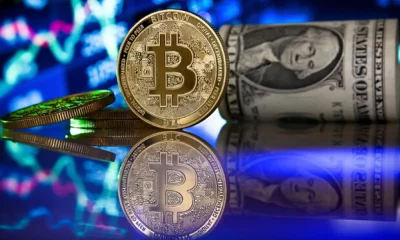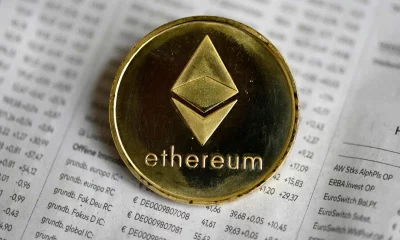Cryptocurrency
Microsoft pens AI cloud computing deal with former Ethereum miner CoreWeave
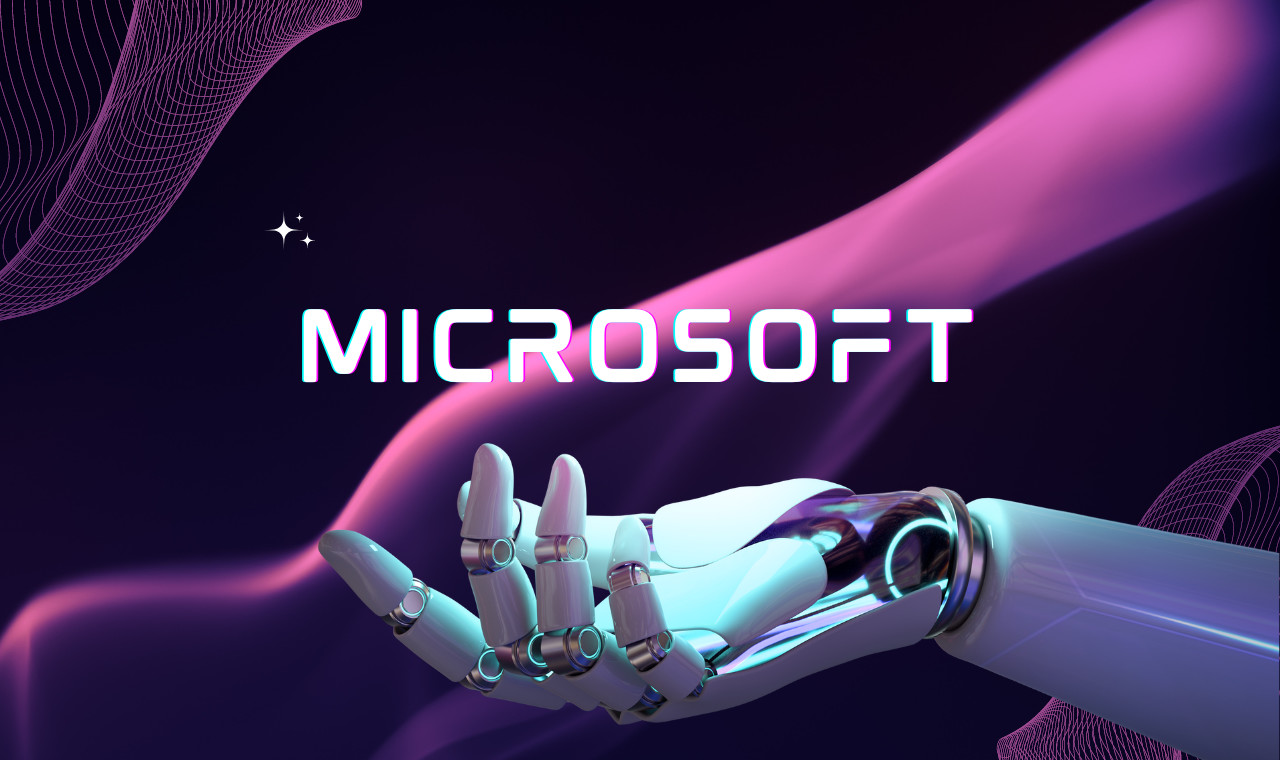
Microsoft has reportedly signed a deal with former Ethereum miner CoreWeave to use its cloud computing infrastructure to support its artificial intelligence (AI)-powered services.
According to a June 1 report from CNBC, which cites “people with knowledge of the matter,” Microsoft is potentially set to spend billions of dollars on the deal with CoreWeave over multiple years.
One of CNBC’s sources claimed the deal was signed earlier in 2023.
Amid the rapid growth of AI tech over the past 12 months, Microsoft has rolled out several AI-powered services. A prime example is OpenAI’s GPT-4 integration with its web browsers Bing and Microsoft Edge, which the firm recently axed the waitlist for.
OpenAI also utilizes Microsoft’s own cloud computing infrastructure, Azure, to handle its sizable computing requirements.
CoreWeave started off as an Ethereum miner in 2017, utilizing graphics processing units (GPUs) to verify transactions on Ethereum during its formative days as a proof-of-work blockchain.
The firm started pivoting its focus to cloud GPU computing around 2019 after spotting a hole in the market for competitively priced, scalable and varied compute options — something it claimed legacy providers weren’t offering.
Notably, reports of the deal with Microsoft come just a few days after CoreWeave announced that it had extended its $221 million Series B funding round from April to bring the total to $421 million.
The Series B was led by Magnetar Capital, with participation from long-standing strategic partner Nvidia.
In April, the firm stated that the capital would be used to expand its cloud infrastructure, which is focused on a wide range of computational workloads such as AI, machine learning, visual effects and rendering — among others.
Commenting on the Microsoft deal via Twitter, Nic Carter, Bitcoin advocate and Castle Island Ventures general partner, highlighted the significance of the firm’s change of industry:
“Ppl make fun of ‘crypto to AI pivots’ but CoreWeave went from mining ETH to using their fleet to do compute for AI and now they’re worth $2b+… one of the fastest growing companies in the world right now.”
Cryptocurrency
Hipposol, A Solana-based Memecoin Announces $Hippos Token Presale Round

[PRESS RELEASE – London, United Kingdom, April 24th, 2024]
Today marks a monumental day as Hipposol, A solana memecoin proudly announces the launch of $hippos pre sale round for early participants. Drawing vibrant inspiration from the mighty and playful hippopotamus, the $Hippos token presale event begins today April 24th 2024, with a sale duration of 26 days.
Hipposol Ready To Pioneer A New Era in Memecoin
$Hippos isn’t merely another entry in the memecoin ledger; it heralds a new era where community, technology, and sheer fun merge to forge genuine value. “With $Hippos, we’re not just redefining memecoins; we’re revolutionizing how a memecoin community and digital currency coexist. This journey isn’t about speculative trading alone; it’s about crafting a community empowered to steer its course and reap substantial growth,” said King Hippo, the revered leader of the Hipposol herd.
The Hipposol team believes the $Hippos pre sale event means more than buying a token; it means joining a memecoin herd that leads. With Hipposol community-driven development approach, users insights and votes directly influenced by the $Hippos holders, Hipposol is set to be next meme sensation on Solana.
$Hippos Presale Facts:
- Token Presale Rate: 1 SOL = 150,000 $Hippos
- Minimum Buy: Dive in with as little as 0.5 SOL
Users can join the Solana meme adventure with Hipposol and experience a new breed of memecoin that’s ready to make waves.
For more updates and news on Hipposol memecoin;
Website | $Hippos Sale portal | Twitter | Telegram
Hipposol is the source of this content. This Press Release is for informational purposes only. The information does not constitute investment advice or an offer to invest. Investing in cryptocurrencies can be volatile and dangerous.
LIMITED OFFER 2024 for CryptoPotato readers at Bybit: Use this link to register and open a $500 BTC-USDT position on Bybit Exchange for free!
Cryptocurrency
Tether Will Freeze Venezuelan Wallets Being Used to Evade US Sanctions
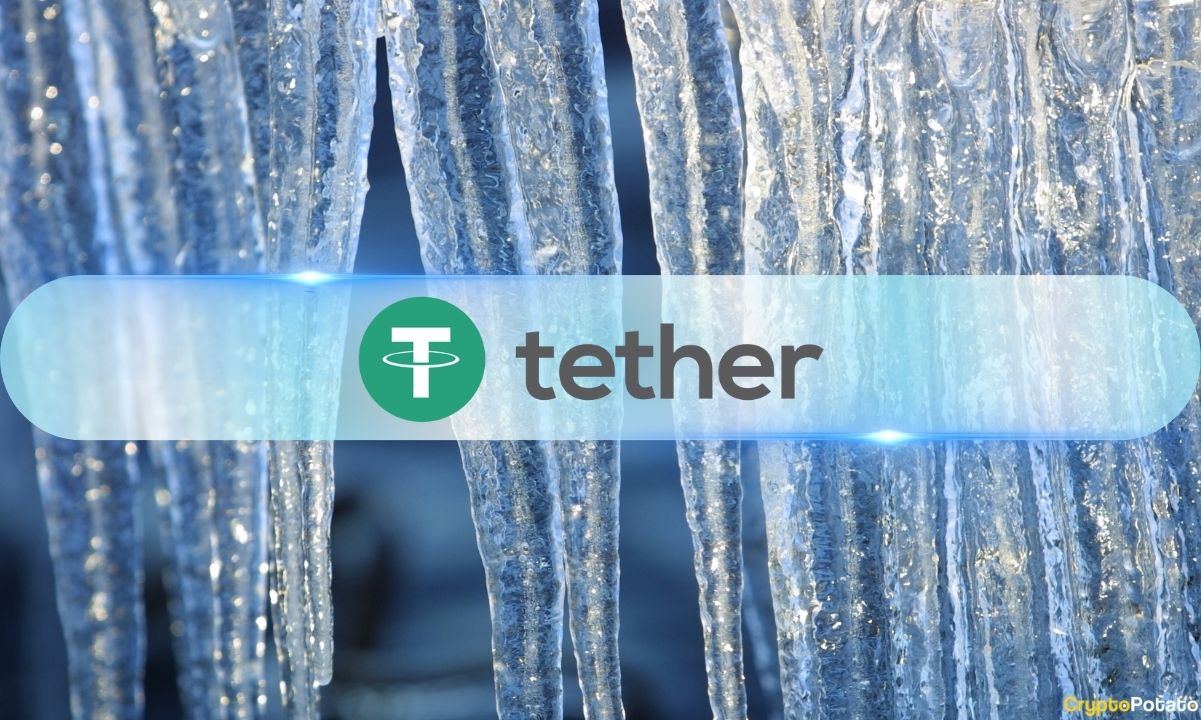
Tether has announced that all wallets associated with Venezuela’s attempts to bypass U.S. sanctions on oil exports will be frozen.
The decision follows recent reports indicating an increased use of Tether’s USDT by Venezuela’s state-run oil company, PDVSA, to avoid sanctions imposed by the United States.
Venezuela’s PDVSA Turns to Tether Amid Sanctions
According to a Reuters report, Venezuela’s state-run oil company, PDVSA, transitioned to using Tether’s USDT after facing renewed sanctions on its oil exports.
Tether took a similar stance in December last year, freezing 161 wallets in compliance with U.S. sanctions.
A spokesperson for the stablecoin issuer emphasized the company’s commitment to upholding sanctions by stating, “Tether respects the OFAC SDN list and is committed to working to ensure sanction addresses are frozen properly.”
PDVSA’s increased use of cryptocurrency payments is part of a broader strategy to mitigate the repercussions of U.S. sanctions re-imposed due to Venezuela’s failure to implement electoral reforms.
By using cryptocurrencies like USDT, PDVSA can conduct transactions while minimizing the risk of assets being seized by U.S. authorities. Reuters notes that PDVSA uses intermediaries to hide the trail and evade tracking in USDT transactions.
However, a recent PDVSA scandal has complicated matters, as investigations uncovered around $21 billion in unexplained receivables from oil exports. This scandal is partly linked to prior transactions involving other cryptocurrencies, adding complexity to the situation.
USDT Prepayment for Oil Deals
In 2024, PDVSA restructured its spot oil deals to require prepayment for half of each cargo’s value in USDT. This requires new customers interested in buying Venezuelan oil to possess a digital wallet capable of conducting cryptocurrency transactions.
Furthermore, the U.S. government has conditionally permitted the resumption of business with PDVSA. This decision came in October when Washington issued a six-month license, allowing trading houses and former PDVSA customers to resume business with Venezuela. However, due to digital transaction requirements, many of these entities had to rely on intermediaries to facilitate the transactions.
Venezuela’s venture into cryptocurrencies dates back to 2018, when it introduced the “petro” token to mitigate the economic turbulence induced by U.S. sanctions. However, the petro’s poor adoption led to its shelving earlier this year.
Meanwhile, OFAC has recently intensified its scrutiny of the cryptocurrency industry. In December, OFAC imposed fines on crypto exchange CoinList amounting to $1.2 million for facilitating Russian users in evading sanctions. Before this, the agency sanctioned a crypto mixer allegedly used by hackers in North Korea.
LIMITED OFFER 2024 for CryptoPotato readers at Bybit: Use this link to register and open a $500 BTC-USDT position on Bybit Exchange for free!
Cryptocurrency
Here are the Top 5 Gainers in the Bitcoin (BTC) Ecosystem YTD: Details
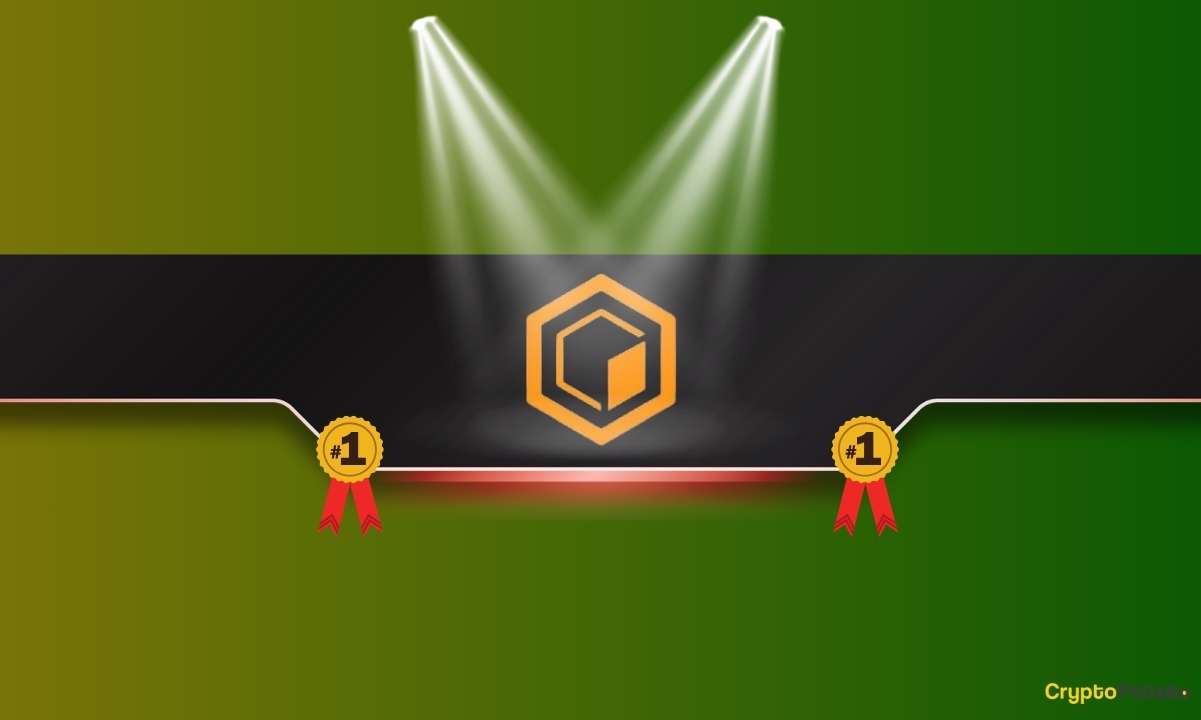
TL;DR
- Core (CORE) has significantly outperformed Bitcoin and many other major cryptocurrencies with a 350% price surge this year.
- Other digital assets related to BTC’s ecosystem, such as Sovryn (SOV) and Ordiswap (ORDS), also reported notable gains, with increases of 210% and 100%, respectively.
CORE Leads the Pack
Bitcoin (BTC) has been making serious waves since the beginning of the year, with its price rising from approximately $42,000 on January 1 to almost $67,000 on April 24 (a 60% increase). However, some cryptocurrencies related to its ecosystem have witnessed even more substantial gains over the same period, and Core (CORE) is the perfect example.
It is a new blockchain that leverages the advantages of Bitcoin’s Proof-of-Work network and the delegated Proof-of-Stake consensus mechanism to offer more security, scalability, and decentralization.
Its native token, CORE, is currently worth around $2.51 (per CoinGecko’s data), a 350% surge compared to the $0.55 observed at the start of 2024.
The asset’s price was even higher at the beginning of April, briefly surpassing the $4 mark, while its market capitalization crossed the $3.5 billion milestone before settling at its current level of around $2.2 billion.
Sovryn (SOV) Comes Next
The protocol, running on a Bitcoin sidechain called Rootstock Smart Contract (RSK), has also witnessed a significant resurgence in the past several months.
Its native token – SOV – has been up 210% since New Year’s Eve, currently trading at approximately $2.10. However, its price performance is far from its glory days in 2021, when a single coin was worth over $35.
Ordiswap (ORDS)
Ordiswap is the first Automated Market Maker (AMM) designed for the BTC blockchain. Its main purpose is to provide liquidity provision and decentralized trading directly to Bitcoin’s native layer.
The governance cryptocurrency of the AMM—ORDS—was launched at the end of December last year and has jumped by 100% since then. Last month, it soared to an all-time high of $0.26 before retracing to its current mark of $0.10.
LeverFi (LEVER)
This is a decentralized leverage trading platform with a native token called LEVER. The latter ascended by 98% since January 1, 2024. It is also among the notable gainers today (April 24), registering a 10% increase on a daily scale.
LEVER’s market capitalization recently jumped above $120 million for the first time while currently hovering around $100 million.
Bitcoin Cash (BCH)
The popular hard-fork blockchain, split from Bitcoin in 2018, finds a place in the list, too. Earlier in April, it completed its second halving, with its price ascending substantially in the months prior to the event. Two weeks ago, BCH hit a multi-year high of more than $700, but it has been on a downtrend as of late.
Currently, a single token is worth around $500, which is still a 93% increase compared to the figure observed at the beginning of the year.
LIMITED OFFER 2024 for CryptoPotato readers at Bybit: Use this link to register and open a $500 BTC-USDT position on Bybit Exchange for free!

 Forex2 years ago
Forex2 years agoForex Today: the dollar is gaining strength amid gloomy sentiment at the start of the Fed’s week

 Forex2 years ago
Forex2 years agoHow is the Australian dollar doing today?

 Forex1 year ago
Forex1 year agoUnbiased review of Pocket Option broker

 Forex2 years ago
Forex2 years agoDollar to pound sterling exchange rate today: Pound plummeted to its lowest since 1985

 Cryptocurrency2 years ago
Cryptocurrency2 years agoWhat happened in the crypto market – current events today

 World2 years ago
World2 years agoWhy are modern video games an art form?

 Stock Markets2 years ago
Stock Markets2 years agoMorgan Stanley: bear market rally to continue

 Economy2 years ago
Economy2 years agoCrude oil tankers double in price due to EU anti-Russian sanctions

